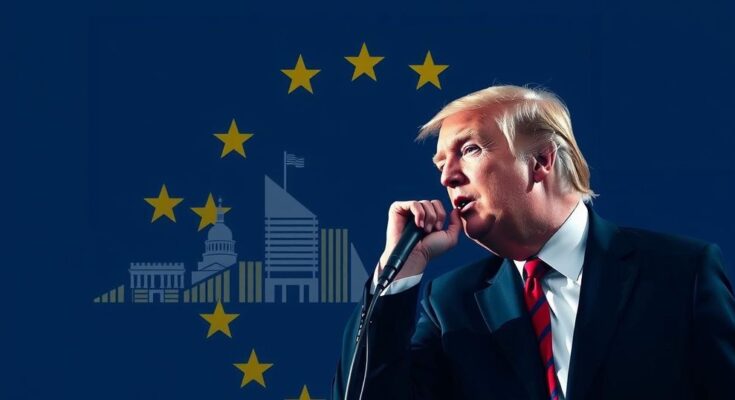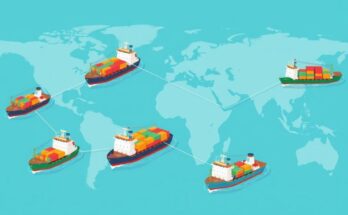Goldman Sachs warns that a second Trump presidency could significantly harm Europe’s economic growth, downgrading forecasts and projecting a 0.5% hit to real GDP due to increased trade tensions and uncertainty over tariffs. European nations may face added pressure to boost defense budgets in response to diminished US military support, further complicating economic recovery prospects.
As the specter of a second Trump presidency looms on the horizon, uncertainty grips Europe’s economic landscape. Goldman Sachs analysts have sounded the alarm about a significant downturn in growth projections for the Euro area. Amidst escalating trade tensions and the potential for sweeping tariffs, they’ve slashed their growth forecasts, predicting a drop to 0.8% for 2025 and only 1% for 2026. With real GDP expected to contract by 0.5%, analysts emphasize that the greatest threat lies not solely in the tariffs themselves but the looming uncertainty surrounding them. Europe stands at a crossroads, with the possibility of Trump’s proposed 10% tariffs intensifying trade policy concerns across the region. The analysts draw attention to the implications for both trade relations and defense spending, particularly in relation to military support to Ukraine amid geopolitical tensions. Countries like Germany, Sweden, and Switzerland are poised to bear the brunt of this impact, particularly through auto-export duties that could reshape economic dynamics. Trump’s tariffs, while a tangible risk, also usher in a climate of volatility that leaves European markets anxious and reactive. “The actual magnitude of tariff increases might matter less than the uncertainty created by threatening to impose tariffs on Europe,” the analysts caution. This uncertainty threatens not only economic stability but also undermines investor confidence, triggering a chain reaction that could distort growth trajectories far beyond the tariffs’ immediate effects. The consequences of a second Trump presidency extend beyond trade disputes, pushing European nations to increase defense budgets significantly as a precautionary response against a potential decline in US military support. This maneuver, while necessary, is unlikely to provide a substantial growth boost. “Any resulting growth boost, however, will likely be limited by modest military spending multipliers in Europe,” the analysts remark, hinting at the complex interplay between military expenditures and economic vitality. In light of these potential upheavals, the warnings from European officials intensify. ECB’s Joachim Nagel and Christine Lagarde have voiced their concerns, suggesting an impending turmoil that threatens to rattle the foundations of economic growth. As Europe’s leaders brace for what could be a politically and economically tumultuous era, the fear of inflation and destabilization hangs palpably in the air.
The backdrop to this analysis is characterized by heightened global trade tensions and the consequential uncertainties surrounding potential tariff implementations. Analysts from Goldman Sachs foresee detrimental impacts on the European economy if Donald Trump, who has previously discussed imposing significant tariffs on imports, secures another presidential term. The historical context of Trump’s prior approaches, combined with existing economic vulnerabilities, sets a precarious stage for the future of Europe’s growth prospects under his administration.
In summary, the possibility of a second Trump presidency brings with it a cocktail of economic uncertainty, potential tariff-induced contractions, and increased defense spending burdens for European nations. As Goldman Sachs analysts suggest, the real threat may lie in the unpredictable nature of trade policies that accompany Trump’s leadership style, potentially derailing the growth trajectory of Europe’s economies in the coming years. With heightened caution and proactive measures, Europe prepares to navigate this uncharted territory.
Original Source: www.businessinsider.com



